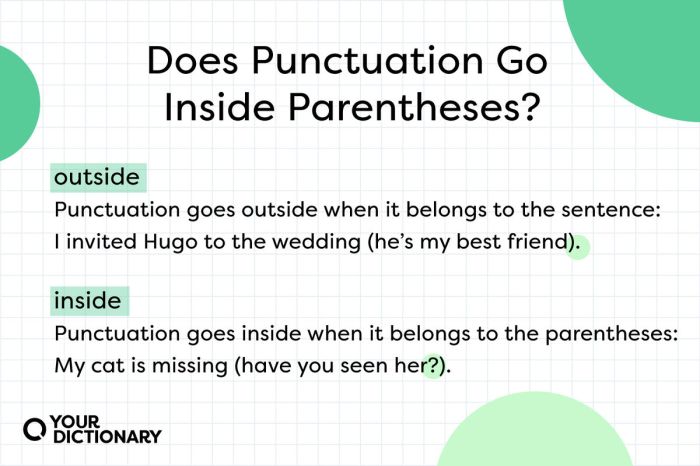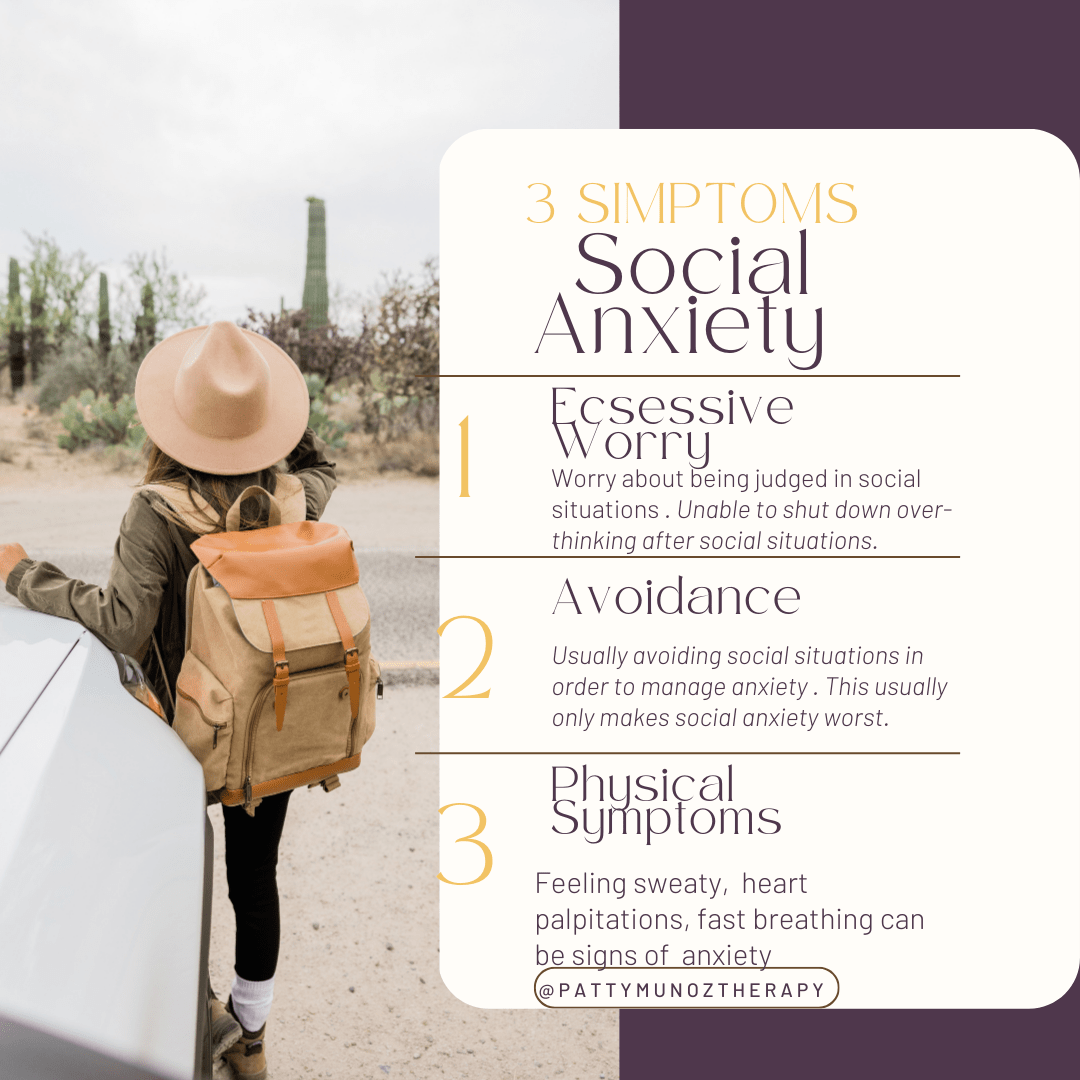8 things people with anxiety want tell their loved ones. This post delves into the often unspoken needs and challenges faced by those living with anxiety. It’s a crucial conversation starter, offering insights into the complexities of anxiety and practical steps to support loved ones navigating this often invisible struggle.
Understanding anxiety is the first step towards building empathy and fostering supportive relationships. This post explores the various types of anxiety disorders, common communication barriers, and the importance of unmet needs. It provides practical strategies for building trust, managing triggers, and setting healthy boundaries.
Understanding Anxiety
Anxiety is a normal human experience, characterized by feelings of worry, nervousness, or unease, often about an event or something with an uncertain outcome. However, when these feelings become persistent, overwhelming, and interfere significantly with daily life, it may indicate an anxiety disorder. Understanding the different types of anxiety disorders, their symptoms, and potential consequences is crucial for those experiencing them and for their loved ones.
This knowledge empowers individuals to seek help and support effectively.
Defining Anxiety and Its Impact
Anxiety is a complex emotional response that involves a range of physical and psychological symptoms. It can significantly impact daily functioning, affecting relationships, work, and overall well-being. Anxiety disorders are categorized as persistent and excessive worry, fear, or discomfort that disrupt daily life.
Types of Anxiety Disorders
Anxiety disorders manifest in various forms, each with its own unique characteristics. Generalized Anxiety Disorder (GAD) involves excessive worry about everyday things, often without a clear cause. Social Anxiety Disorder (SAD) is characterized by intense fear of social situations and judgment from others. Panic Disorder is marked by recurring panic attacks, episodes of intense fear and physical discomfort.
Other forms include specific phobias, and separation anxiety disorder.
Common Symptoms of Anxiety
Anxiety’s impact extends beyond emotional distress. Physical symptoms frequently accompany anxiety disorders, including rapid heartbeat, shortness of breath, sweating, trembling, and nausea. Emotional symptoms may involve restlessness, irritability, difficulty concentrating, and sleep disturbances. These symptoms vary in intensity and frequency among individuals.
Long-Term Consequences of Untreated Anxiety
Untreated anxiety disorders can lead to a range of detrimental consequences. These include depression, substance abuse, physical health problems, and strained relationships. For example, individuals struggling with chronic anxiety may develop cardiovascular issues, experience digestive problems, or have difficulty maintaining healthy sleep patterns. Without appropriate intervention, the impact on daily life and overall well-being can be severe.
Table: Understanding Anxiety Disorders
| Condition | Symptoms | Impact | Treatment Approaches |
|---|---|---|---|
| Generalized Anxiety Disorder (GAD) | Persistent worry, restlessness, fatigue, difficulty concentrating, irritability, sleep disturbances, muscle tension. | Difficulty concentrating at work or school, strained relationships, avoidance of social situations, decreased productivity. | Cognitive Behavioral Therapy (CBT), medication (e.g., antidepressants), relaxation techniques. |
| Social Anxiety Disorder (SAD) | Fear of social situations, worry about being judged, blushing, sweating, trembling, nausea, avoidance of social gatherings. | Difficulty forming and maintaining relationships, social isolation, avoidance of work or school, decreased self-esteem. | CBT, exposure therapy, medication (e.g., selective serotonin reuptake inhibitors). |
| Panic Disorder | Recurring panic attacks, intense fear, rapid heartbeat, shortness of breath, chest pain, sweating, trembling, dizziness. | Fear of having panic attacks, avoidance of situations where attacks might occur, disruption of daily routines, potential for developing agoraphobia. | CBT, interoceptive exposure, medication (e.g., antidepressants). |
Communication Challenges

Navigating relationships with anxious individuals can be tricky, often due to misinterpretations stemming from anxiety’s impact on communication. Anxiety significantly alters thought processes and behaviors, which can lead to misunderstandings between anxious individuals and their loved ones. Recognizing these communication barriers is crucial for fostering empathy and support. This section delves into common pitfalls and provides strategies for healthier interaction.Anxious thoughts and behaviors can sometimes misrepresent a person’s intentions and feelings.
What might appear as aloofness or disinterest to an outsider is often a manifestation of internal struggles and fears, particularly related to social judgment or rejection. Understanding this nuanced reality is key to bridging the communication gap. This understanding allows for more compassionate and effective communication.
Common Communication Barriers
Anxiety often creates communication barriers, impacting how anxious individuals express themselves and how others perceive their actions. These barriers can include avoidance of social situations, difficulty expressing needs, and misinterpretations of non-verbal cues. Fear of judgment or rejection can significantly impede open communication.
Fear of Judgment or Rejection
The fear of judgment or rejection is a potent force in the lives of anxious individuals. This fear can manifest as hesitancy to express opinions, reluctance to initiate conversations, or a tendency to self-censor. Anxious individuals might perceive potential criticism or disapproval in situations where none is intended, leading to a defensive posture and further communication difficulties. For instance, a simple suggestion to try a new activity might be perceived as a personal attack, causing the anxious person to withdraw or become overly apologetic.
Misrepresentation of Intentions
Anxious thoughts and behaviors can frequently misrepresent a person’s intentions. For example, a delay in responding to a message might be interpreted as disinterest or disregard, while in reality, the anxious individual may be wrestling with internal anxieties about the content of their response. This internal struggle can lead to a delayed or even avoided response, which is often misconstrued.
Similarly, avoidance of social gatherings might be interpreted as rudeness, when the underlying reason is a crippling fear of social judgment.
Misunderstandings from Anxiety-Related Patterns
Misunderstandings can arise from anxiety-related communication patterns. For instance, an anxious individual might interpret a lighthearted comment as a serious criticism, or a simple request as a demanding one. These misinterpretations stem from heightened sensitivity and a tendency to anticipate negative outcomes. Another example is when an anxious person avoids eye contact, which can be mistaken as a sign of disrespect or dishonesty, when it’s actually a symptom of anxiety.
Healthy vs. Anxiety-Related Communication Styles
| Characteristic | Healthy Communication Style | Anxiety-Related Communication Style |
|---|---|---|
| Expression of Needs | Open and direct expression of needs and preferences. | Indirect or veiled expression of needs due to fear of rejection or burdening others. |
| Nonverbal Communication | Open and congruent nonverbal cues (e.g., eye contact, relaxed posture). | Nonverbal cues that may be inconsistent with verbal communication (e.g., avoiding eye contact, fidgeting, tense posture). |
| Response to Criticism | Constructive feedback is received and used for growth. | Criticism is perceived as personal attacks, leading to defensiveness or withdrawal. |
| Conflict Resolution | Open discussion and resolution of disagreements. | Avoidance of conflict or escalations due to fear of confrontation. |
| Emotional Regulation | Emotional expression is managed appropriately. | Difficulty in managing emotional responses due to anxiety. |
Unmet Needs and Expectations
Often, the unspoken anxieties of those struggling with anxiety manifest as unmet needs and unrealistic expectations, both for themselves and others. These unspoken needs can create a chasm between the anxious individual and their loved ones, leading to misunderstandings and conflict. Understanding these unmet needs is crucial for building a supportive and empathetic relationship.
Unmet Needs of Anxious Individuals
Anxious individuals frequently experience a range of unmet needs that can significantly impact their well-being and relationships. These needs often go unacknowledged or are misinterpreted by loved ones, leading to frustration and distance. These unmet needs can include the need for predictable routines, clear communication, and reassurance. They may also crave support and understanding in managing their anxieties, often seeking reassurance that their feelings are valid and not a reflection of their worth.
Unrealistic Expectations of Anxious Individuals
Anxious individuals can sometimes develop unrealistic expectations of themselves or others. They may strive for perfection, leading to self-criticism and feelings of inadequacy. They might also expect others to anticipate their needs and provide constant reassurance, creating a heavy burden for those around them. This can manifest in demanding situations where their anxiety is perceived as overreactions or unreasonable by others.
For example, an individual might expect their partner to foresee and prevent any potential anxiety triggers.
Ever wondered what’s really going on behind those anxious eyes? It’s like a secret language, and sometimes, understanding that language is as simple as listening. While it’s tough to know exactly what someone with anxiety wants to say, 8 things are frequently mentioned by those struggling. It’s similar to helping your child accept their braces; you need patience, understanding, and a lot of reassurance.
Helping your child accept their braces can be a major step for both parent and child, so consider these 8 points when trying to connect with someone who struggles with anxiety. Ultimately, these tips can also apply to so many different situations in life.
Unrealistic Expectations of Others
Conversely, anxious individuals might also have unrealistic expectations of others. They may expect constant reassurance, or worry about the smallest details, expecting others to be vigilant and worry about the same issues. This can put a strain on relationships, as others may feel overwhelmed or unable to meet these perceived expectations.
Potential for Conflict
When these unmet needs and unrealistic expectations aren’t met, conflict is inevitable. Anxious individuals may feel unheard, misunderstood, or unsupported, leading to feelings of isolation and resentment. Loved ones may feel overwhelmed, frustrated, or even resentful, perceiving the anxious individual’s needs as excessive or unreasonable. This creates a vicious cycle of unmet expectations and escalating conflict.
Importance of Understanding Needs and Expectations
Building healthy relationships requires a deep understanding of the needs and expectations of all parties involved. By acknowledging and validating the unmet needs of anxious individuals, loved ones can create a supportive and understanding environment. This understanding allows for open communication, empathy, and shared responsibility in managing anxiety. It is essential to recognize that the needs and expectations of anxious individuals are often rooted in their experiences and the specific triggers of their anxieties.
Common Needs and Expectations
| Needs and Expectations of Anxious Individuals | Needs and Expectations of Loved Ones |
|---|---|
| Predictable routines, clear communication, reassurance | Patience, understanding, empathy, clear boundaries |
| Support and validation of feelings | Active listening, validating feelings without enabling |
| Space and time for managing anxiety | Respect for individual needs and pace |
| Avoidance of triggers, realistic expectations | Open communication about limitations and expectations |
| Support in identifying and managing triggers | Collaboration in finding coping strategies |
Seeking Support and Understanding

Navigating anxiety can feel isolating. It’s often difficult to articulate the complex emotions and experiences that accompany it. Learning to recognize and validate these feelings, as well as fostering open communication, is crucial for those struggling with anxiety and those who want to support them. Understanding the importance of support and how to offer it effectively can significantly improve the well-being of anxious individuals.Open communication and active listening are cornerstones of effective support.
Anxious individuals often feel misunderstood or judged, leading to reluctance to share their experiences. Creating a safe and non-judgmental space where they feel comfortable expressing their feelings is essential. This involves not only listening attentively but also actively seeking to understand their perspective without interrupting or offering unsolicited advice.
Encouraging Open Communication
Building trust and encouraging open communication takes time and effort. A supportive environment allows individuals to express their anxieties without fear of criticism or judgment. This includes validating their feelings, even if those feelings seem irrational or exaggerated to others.
Strategies for Encouraging Sharing
Validation is crucial in helping anxious individuals feel heard and understood. Instead of dismissing their concerns, acknowledge their feelings. For example, “I can see how worried you are about that presentation” or “It sounds like this is causing you a lot of stress” are effective ways to show empathy.Reassurance, when appropriate, can help ease anxiety. However, it’s essential to avoid minimizing their concerns.
Instead of saying “Don’t worry, it will be okay,” try phrases like, “I’m here for you and I want to help you through this.” Reassurance should be coupled with tangible support.
Setting Boundaries While Being Supportive
While offering support is essential, it’s equally important to set boundaries. This helps prevent over-involvement and ensures both parties maintain their well-being. It’s okay to say “I can’t always fix this, but I’ll be here to listen.” This clarifies expectations and ensures that support doesn’t become a burden.
Understanding Anxiety: Questions to Ask
Open-ended questions can facilitate a deeper understanding of an anxious individual’s experience. These questions aim to encourage reflection and help build a more complete picture of their anxieties, allowing for better support.
- What specific situations or triggers tend to increase your anxiety?
- Can you describe the physical sensations you experience when you feel anxious?
- How does your anxiety impact your daily life and routine?
- What coping mechanisms have you found helpful in the past?
- Are there any specific things you would like me to avoid saying or doing when you are feeling anxious?
- What are your biggest fears related to this situation?
- How can I best support you during times of heightened anxiety?
- What is your current level of understanding about your anxiety and how it works?
- What kind of support do you think would be most helpful to you right now?
- What are some of your hopes and dreams, and how does anxiety impact them?
Building Trust and Empathy
Building trust with someone experiencing anxiety is crucial for fostering a supportive relationship. It requires a conscious effort to understand their perspective and validate their feelings, even if those feelings seem irrational or excessive to an outside observer. This process is not about fixing the anxiety but about creating a safe space where the individual feels heard and understood.Trust is built on consistent, empathetic responses over time.
Figuring out how to best support loved ones with anxiety can be tricky. They often want to share 8 key things, but sometimes those feelings get lost in translation. Luckily, learning how to communicate effectively, like the 11 ways to talk to toddlers that will actually get through ( 11 ways talk toddlers will listen ), can be applied to adults too.
Ultimately, understanding and empathy are the real keys to helping anyone with anxiety feel heard and supported.
It’s about showing that you are reliable and can be counted on to offer support, not just when it’s convenient. Understanding that anxiety is a real and significant experience for the individual is paramount. This understanding is not a passive acceptance, but a genuine effort to comprehend the challenges and obstacles they face.
Building Trust
Building trust with someone experiencing anxiety involves demonstrating reliability and consistency in your actions and words. This means keeping promises, being present when you say you will be, and following through on commitments. Small gestures of support, like remembering details about their anxieties or offering help with tasks they find challenging, can significantly contribute to building trust. Open communication about your own limitations and expectations is also important, allowing for realistic expectations and avoiding potential disappointment.
Showing Empathy Without Judgment
Empathy is crucial in understanding and supporting someone with anxiety. It involves trying to see the world from their perspective, acknowledging their feelings, and responding with compassion and understanding, without judgment or criticism. Anxious individuals often feel judged or misunderstood, so a non-judgmental approach is essential. Avoid minimizing their concerns or suggesting that their feelings are unfounded.
Examples of Empathetic Responses
Instead of dismissing or downplaying an anxious individual’s concerns, use empathetic responses that acknowledge their feelings. For example, instead of saying “Don’t worry, it’ll be fine,” try “I can see how worried you are about this. Tell me more about what’s making you feel anxious.” Another example: Instead of saying “You’re overreacting,” try “I understand that this situation is very stressful for you.
How can I help?” These responses validate their feelings and show that you care about their experience.
The Role of Patience and Consistency
Building trust and fostering empathy is not a quick process. It requires patience, understanding, and consistency. Be prepared to listen repeatedly and offer support consistently, even when the individual’s anxiety doesn’t seem to improve immediately. Remember, progress may be slow, but each step forward contributes to a stronger relationship built on mutual understanding and respect.
Table: Situations, Responses, and Outcomes
| Situation | Anxious Response | Empathetic Response | Outcome |
|---|---|---|---|
| Social gathering | Avoids eye contact, fidgets, expresses fear of judgment. | “I see you’re feeling a little tense. It’s okay if you don’t want to talk right now. Just let me know if you need a break or want to chat about something else.” | Individual feels understood and supported, increasing comfort level. |
| Important presentation | Shows signs of intense worry, difficulty focusing. | “I can see how nervous you are about the presentation. It’s completely understandable to feel this way. Tell me what’s making you anxious, and we can brainstorm some strategies to help.” | Individual feels empowered and less isolated, potentially leading to better performance. |
| Unexpected event | Panicked, overwhelmed, seeks reassurance. | “I can see how unexpected this is and that it’s causing you a lot of stress. Let’s take a deep breath together and figure out how we can approach this.” | Individual feels calmed and supported in a crisis, fostering a sense of security. |
| Daily tasks | Hesitates to take action, expresses fear of failure. | “I understand that taking on this task feels overwhelming. Let’s break it down into smaller steps, and I can help you with each one.” | Individual feels supported in tackling tasks, building confidence in their abilities. |
Practical Strategies for Support
Supporting someone with anxiety requires understanding and empathy, but also practical strategies to help them manage their symptoms. It’s crucial to remember that everyone experiences anxiety differently, and what works for one person might not work for another. The key is to be patient, supportive, and adaptable in your approach.Effective support involves more than just acknowledging their struggles.
Ever wonder what’s really going on behind those anxious eyes? Learning how to avoid making stupid mistakes, like misinterpreting someone’s actions or unintentionally pushing buttons, can help tremendously. Knowing how to better communicate with someone who experiences anxiety is crucial. That’s why understanding the 8 things people with anxiety want their loved ones to know is so important.
Check out how to avoid making stupid mistakes for some practical tips. Ultimately, understanding and empathy go a long way in creating a supportive environment for those around you. This helps tremendously in knowing how to navigate those tricky situations and builds stronger connections.
It necessitates actively participating in their journey toward well-being. By learning practical strategies, you can provide meaningful assistance and create a supportive environment that empowers them to manage their anxiety.
Managing Anxiety Triggers
Identifying and understanding anxiety triggers is the first step toward managing them. This involves open communication and observing patterns. Anxious individuals may react differently to various situations, and a trigger for one person might not affect another. By understanding what situations or thoughts tend to increase their anxiety, you can help them develop coping mechanisms.
- Pay attention to the specific situations or thoughts that seem to escalate anxiety.
- Help the person identify their physical and emotional responses to these triggers.
- Work together to develop strategies to avoid or cope with these triggers. This could involve creating a plan for handling stressful situations or learning relaxation techniques.
Encouraging Self-Care and Healthy Coping Mechanisms, 8 things people with anxiety want tell their loved ones
Self-care is crucial for managing anxiety. Encouraging healthy coping mechanisms, like exercise, mindfulness, and a balanced diet, can significantly reduce anxiety symptoms. It is essential to empower the person to take ownership of their self-care.
- Encourage regular exercise. Physical activity releases endorphins, which have mood-boosting effects. Suggest activities they enjoy, like walking, swimming, or dancing.
- Promote mindfulness practices. Mindfulness techniques, like deep breathing exercises or meditation, can help manage stress and anxiety. Guide them to resources or apps for guided meditations.
- Suggest a balanced diet. A healthy diet rich in fruits, vegetables, and whole grains can contribute to overall well-being and can positively impact mood.
- Prioritize sufficient sleep. Adequate sleep is vital for emotional regulation and reducing anxiety symptoms. Encourage a consistent sleep schedule.
Supporting the Individual in Seeking Professional Help
Seeking professional help is often a necessary step in managing anxiety. Loved ones can play a crucial role in encouraging this process. It’s essential to normalize seeking help and emphasize that it’s a sign of strength, not weakness.
- Normalize seeking professional help. Reassure the person that therapy is a common and effective way to manage anxiety.
- Research and recommend therapists specializing in anxiety disorders.
- Offer to accompany them to appointments or provide emotional support during the process.
- Encourage them to actively participate in therapy and follow their therapist’s advice.
Practical Steps for Loved Ones
Supporting someone with anxiety requires proactive steps. A checklist can provide a framework for loved ones to effectively support their loved one.
| Step | Action |
|---|---|
| 1 | Identify triggers and patterns |
| 2 | Encourage self-care practices |
| 3 | Normalize seeking professional help |
| 4 | Offer support during appointments |
| 5 | Practice patience and empathy |
| 6 | Communicate openly and honestly |
| 7 | Educate yourself about anxiety |
Understanding Triggers and Reactions: 8 Things People With Anxiety Want Tell Their Loved Ones
Anxiety is a complex condition, and its manifestation varies greatly from person to person. Understanding the specific triggers that ignite anxiety responses, as well as the diverse ways anxiety manifests, is crucial for those seeking to support someone with anxiety. Recognizing these patterns allows for more empathetic and effective support strategies.Identifying and understanding anxiety triggers is a key step toward managing and coping with the condition.
Different individuals react to similar situations in various ways, and this understanding allows for a more personalized approach to support. A comprehensive understanding of how anxiety presents itself, from avoidance to outbursts, facilitates better communication and reduces potential misunderstandings. This knowledge empowers individuals with anxiety and those supporting them to navigate challenging situations more effectively.
Common Anxiety Triggers
Understanding the specific situations or stimuli that trigger anxiety responses is vital for developing coping mechanisms. Common triggers include stressful life events, social situations, specific places or environments, and internal thoughts or worries. A range of internal and external factors can contribute to anxiety.
Manifestations of Anxiety
Anxiety doesn’t always present in the same way. It can manifest as physical symptoms, emotional responses, and behavioral changes. Common manifestations include avoidance, withdrawal, emotional outbursts, racing thoughts, and difficulty concentrating. These reactions, while often perceived negatively, are often the body’s natural response to overwhelming feelings.
Potential Misunderstandings About Anxiety Reactions
It’s important to acknowledge that anxiety reactions can be misinterpreted by those unfamiliar with the condition. For instance, avoidance might be seen as laziness or a lack of cooperation, whereas withdrawal could be misconstrued as rudeness or disinterest. Understanding the root cause of these reactions is crucial to avoid these misinterpretations.
Comparing and Contrasting Reactions to Triggers
Different individuals react to anxiety-provoking situations in diverse ways. One person might experience a sudden surge of panic and become withdrawn, while another might become agitated and exhibit aggressive behavior. These differences stem from individual experiences, coping mechanisms, and the specific trigger. One person might avoid public speaking, while another might experience physical symptoms such as nausea or dizziness.
Table of Triggers, Reactions, and Coping Strategies
| Trigger | Reaction | Coping Strategy |
|---|---|---|
| Public speaking | Sweating, shaking, racing heart, avoidance | Deep breathing exercises, practicing beforehand, seeking support, positive self-talk |
| Social gatherings | Overwhelming anxiety, withdrawal, difficulty engaging | Setting boundaries, identifying safe spaces, practicing social skills, relaxation techniques |
| Deadlines | Procrastination, racing thoughts, difficulty concentrating | Breaking down tasks, prioritizing, creating realistic schedules, time management techniques |
| Financial concerns | Restlessness, irritability, difficulty sleeping | Budgeting, seeking financial advice, practicing mindfulness, seeking support |
| Unforeseen changes | Panic, feeling overwhelmed, fear of the unknown | Developing flexibility, accepting uncertainty, focusing on what is controllable, seeking support |
| Specific locations | Panic attacks, avoidance, physical symptoms | Creating a safety plan, identifying triggers, using coping mechanisms, seeking professional support |
| Internal worries | Racing thoughts, negativity, rumination | Journaling, mindfulness practices, positive affirmations, challenging negative thoughts |
| Specific people | Increased anxiety, avoidance, emotional outbursts | Setting boundaries, practicing assertive communication, identifying healthy relationship patterns, seeking support |
Maintaining Healthy Boundaries
Supporting someone with anxiety requires understanding and empathy, but it’s equally important to establish and maintain healthy boundaries. These boundaries protect both you and the person experiencing anxiety, preventing burnout and ensuring their well-being. Healthy boundaries allow for support without enabling harmful behaviors or taking on the burden of their anxieties.Maintaining healthy boundaries is crucial in fostering a supportive and sustainable relationship.
It creates a safe space for the anxious individual to manage their own emotions and behaviors while also respecting the needs and limits of the support provider. This approach fosters a balanced dynamic, where both parties feel respected and understood.
Importance of Setting Boundaries
Setting boundaries is essential for preventing the support provider from becoming overwhelmed by the anxious individual’s needs. This proactive approach helps to ensure the support is sustainable and avoids potential resentment or burnout. It also allows the anxious individual to develop a sense of independence and responsibility for managing their own anxieties. Without boundaries, the support provider might inadvertently enable or worsen the anxiety.
Avoiding Enabling Behaviors
Enabling behaviors often stem from well-intentioned attempts to help, but they can inadvertently perpetuate the anxiety. These behaviors include taking on the anxious individual’s responsibilities, making excessive accommodations, or consistently rescuing them from difficult situations. By setting clear boundaries, you can avoid these enabling behaviors, empowering the anxious individual to develop coping mechanisms and self-reliance.
Communicating Clear Expectations and Limits
Open communication is vital when establishing boundaries. Clearly articulate your limits and expectations in a calm and respectful manner. For example, instead of saying “Don’t worry,” try “I’m here to listen and support you, but I can’t solve all your problems.” This approach fosters a healthy exchange of communication and respect. Avoid vague or conditional statements.
Signs to Seek Professional Help
Recognizing when anxiety warrants professional intervention is crucial. Observe patterns of avoidance, extreme emotional distress, and inability to function in daily life. Persistent or worsening symptoms, alongside a lack of improvement despite support efforts, may indicate the need for professional help. Don’t hesitate to encourage the individual to seek professional guidance if these signs are present.
Establishing and Maintaining Boundaries
- Limit your availability for support. While compassion is essential, it’s crucial to define times and situations where you can provide support. This could include setting specific hours for calls or conversations, or having scheduled check-ins.
- Resist taking on the individual’s responsibilities. Encourage them to take ownership of tasks, even if they initially struggle. This fosters a sense of self-reliance.
- Establish clear communication guidelines. Set expectations about the frequency and nature of communication. For example, agree on specific times to discuss issues and avoid excessive calls or texts.
- Avoid rescuing them from difficult situations. Encourage problem-solving and decision-making skills. This is a crucial step in fostering independence and resilience.
- Define acceptable emotional responses. While understanding emotional distress is important, avoid taking on the role of emotional absorber. Clearly communicate that you can provide support, but not absorb all their emotional burdens.
- Prioritize your own well-being. Remember that supporting someone with anxiety requires energy and resources. Ensure you’re meeting your own needs to maintain a healthy balance.
- Avoid taking on their anxieties. Reiterate your support while setting boundaries. Clearly state that you are there to offer assistance, but you are not responsible for their anxiety or its resolution.
- Regularly review and adjust boundaries. Support needs are dynamic. Regularly assess and adjust your boundaries to ensure they remain effective and beneficial to both parties.
Last Word
Ultimately, supporting someone with anxiety requires understanding, empathy, and patience. By acknowledging the unique challenges they face and implementing the practical strategies Artikeld here, we can foster stronger, more supportive relationships. Remember, understanding and compassion are key to helping those around us navigate this often-challenging experience.











